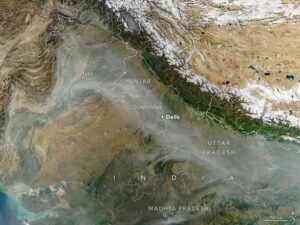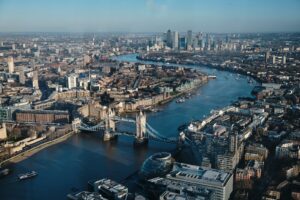In the UK, a ‘School Street’ is a road outside a school with a temporary restriction on traffic at drop-off and pick-up times. In Paris, the concept has been developed so that different solutions can be applied to different streets.
last week, RESPIRE, France’s National Association for the Improvement of Air Quality published an article explaining the different schemes adopted across Paris and we are grateful that they have allowed us to reprint it here:
The Parisian “Rue aux écoles” scheme was inspired by the notion of ‘school street’, a concept initially coined at the end of the twentieth century in Italy, before being widely developed and popularised from 2012 onwards in Belgium. Building on this success, the concept was integrated into the Belgian Highway Code in 2018 but it differs completely from the version implemented by the City of Paris. Most often, the term ‘school street’ refers to a temporary closure of the road to motorised traffic, limited to school entry and exit times, about one hour a day.
School streets are therefore rarely associated with the redevelopment of roads, as is the case in Paris, where the system aims primarily at the permanent pedestrianisation of the streets, when the closure to traffic is systematically accompanied by road transformations. Changing the floor covering, adding street furniture and greening make it possible to structurally modify the uses of the street while being part of an urban resilience strategy in the face of climate change.
However, faced with the technical constraints inherent in a city built for car traffic, there are different alternative versions of the system, adapted to the specificities of each street concerned.
Typical models
1) Undeveloped permanently closed streets (Phase 1)
When a street is selected to become a school street, a first transitional phase usually takes place, during which the street is closed to traffic via the installation of barriers. ‘Pedestrian area’ signs are added, white markings are painted on the ground and old parking spaces are neutralised. The intention is that this transitional phase will be made permanent as soon as possible, with more substantial developments.
This type of street is effective in cutting off traffic because it is fast and requires little budget. At Respire, we are in favour of this type of street, with some tactical adjustments that make the street more pleasant, because it allows the multiplication of the system which can thus benefit a wider population.
Rue des Tourelles, 20th, ©Respire September 20232) Streets permanently closed to traffic and fully landscaped (Phase 2)
In a second phase, the transitional streets are the subject of much heavier and longer developments. On this occasion, the floor covering is replaced by a light asphalt to help cool the street. It should be noted that the road is then raised to the level of the pavement, which disappears in favour of a fully level square.
Another important aspect is that of greening, which is very important in the system, and which often conditions the choice of projects. Intersections are also made safer, for example by removing parking spaces in front of pedestrian crossings. From time to time, playful floor markings and more elaborate furniture such as benches and fountains are added.
It should be noted that these school streets are spaces where general traffic is prohibited, but they remain equipped for the circulation of emergency and cleaning vehicles, as well as any residents who need access to their garages. This explains why it is forbidden to make more substantial developments, such as playgrounds or squares.
Rue Sommerard, 5th, ©Respire September 2023Alternative models
Open pedestrian areas
These correspond to a legal status that allows traffic to be restricted to local services (local residents and logistics). They therefore do not completely prohibit traffic but severely restrict it, provided that they are sufficiently equipped for this. These developments can be the change of ground covering, the removal of parking lots and pedestrian crossings, the raising of the street entrance with paving or paving to signal the pedestrian character, greening, widening of sidewalks, cul-de-sac, etc.
Unlike the streets with ‘model’ schools, the open pedestrian areas in Paris have no specific doctrine of development to follow, i.e. there are no rules that make certain developments mandatory. This explains the qualitative disparities between the different pedestrian areas throughout the city.
Rue de Moscou, 8th, ©Respire October 2023 Rue Gustave Doré 17th, ©Respire October 2023 Rue Guillaume Apollinaire, 6th, ©Respire November 2023Meeting areas
These correspond to a legal status that makes it possible to calm a street by restricting traffic to 20 km/h and giving priority to pedestrians over all other modes, without any traffic restrictions.
The development generally consists of at least putting up ‘Meeting Zone’ signs, markings on the ground and removing pedestrian crossings because, by definition, pedestrians can cross anywhere. Here again, the developments must be sufficiently ‘credible’ to signal the peaceful nature of the street.
Rue Guillaume Apollinaire, 6th, ©Respire November 202Streets temporarily closed to traffic
These are school streets in the classic sense, as found everywhere in Europe. There are very few of them in Paris. They are initiated by the parents of pupils and managed by them or by the volunteer school staff during school leaving and entry times.
This article was originally published on 9th January 2024 on the Respire website

















Leave a Reply